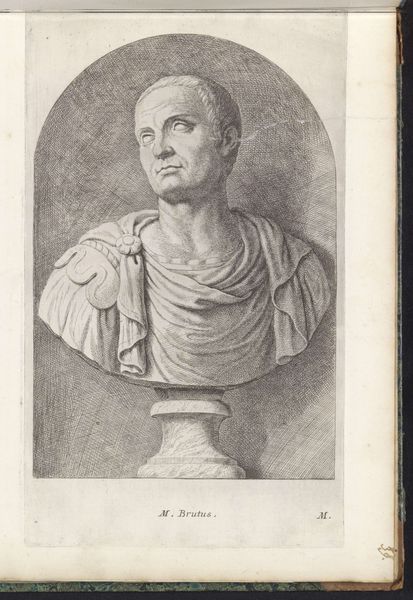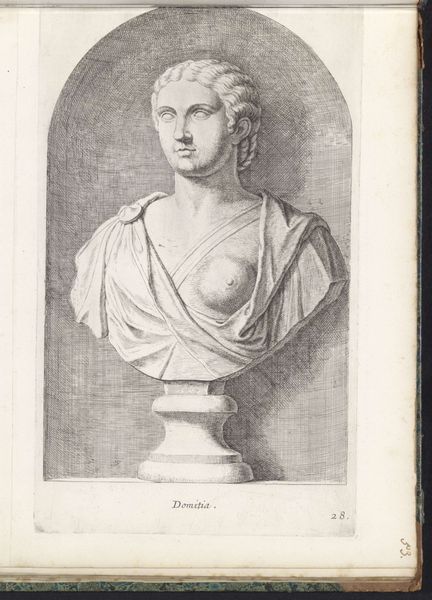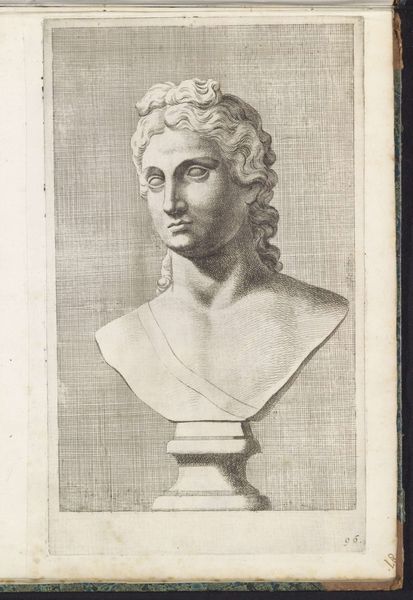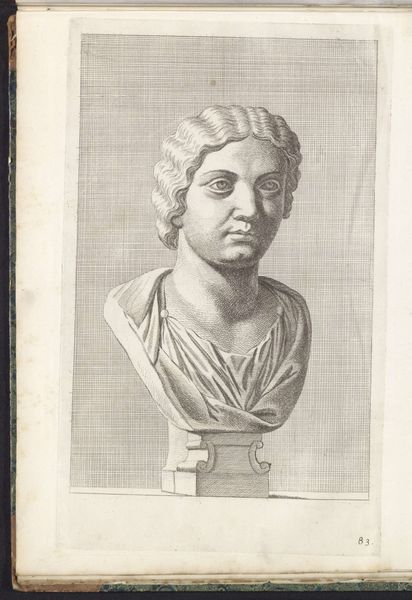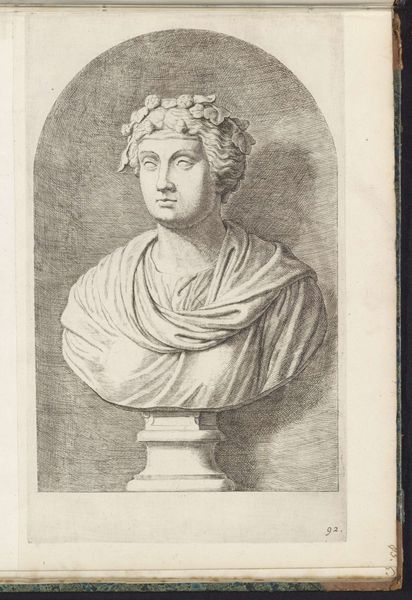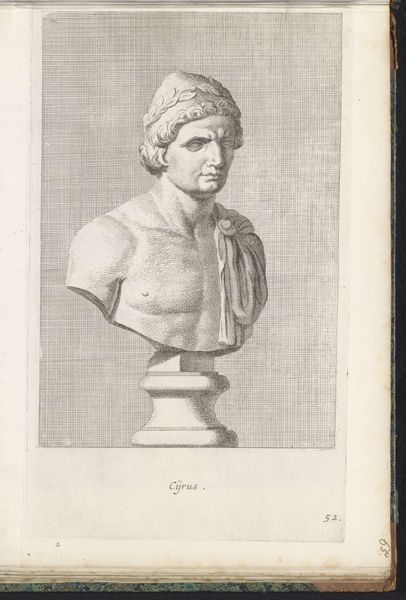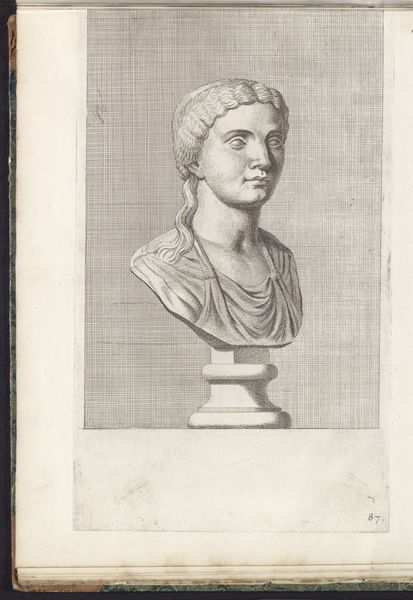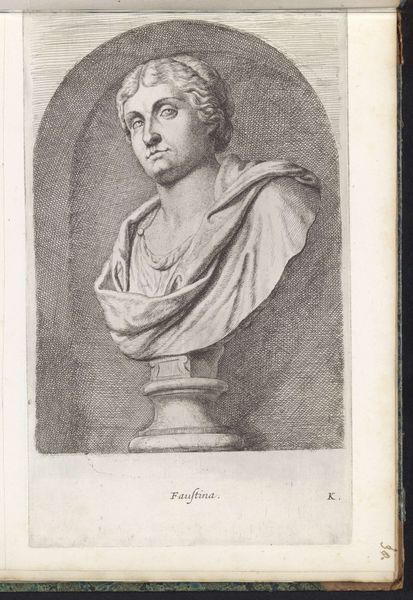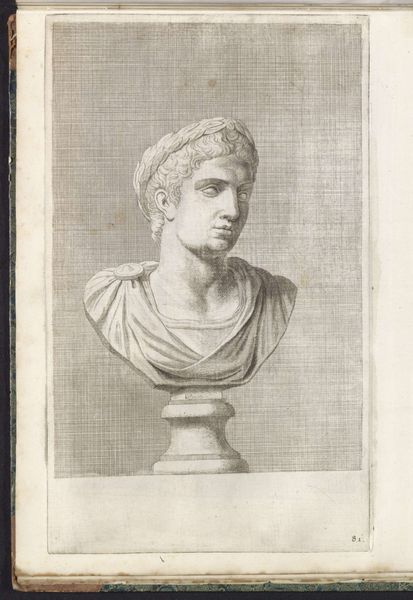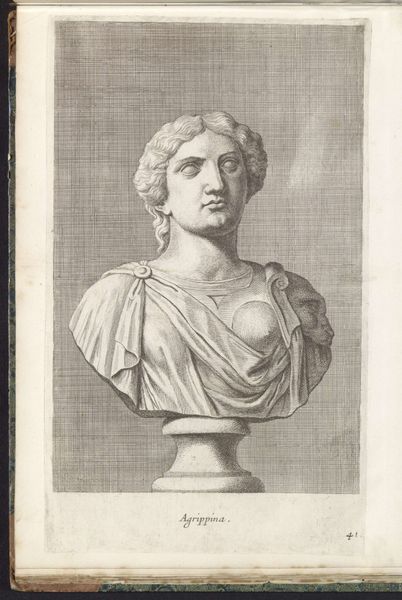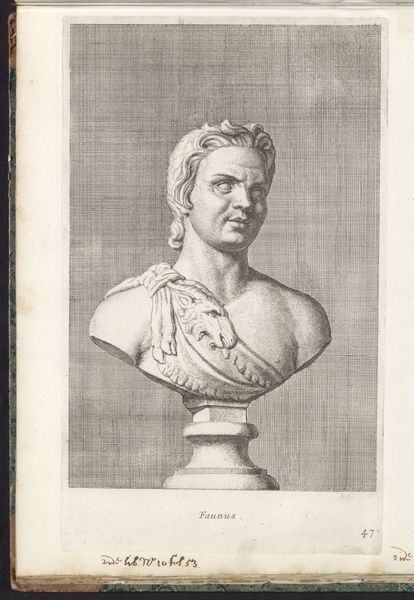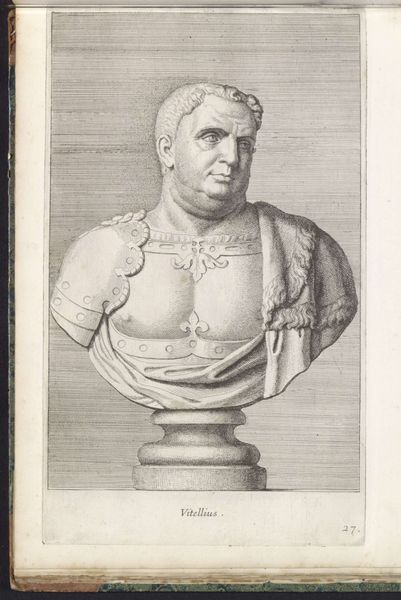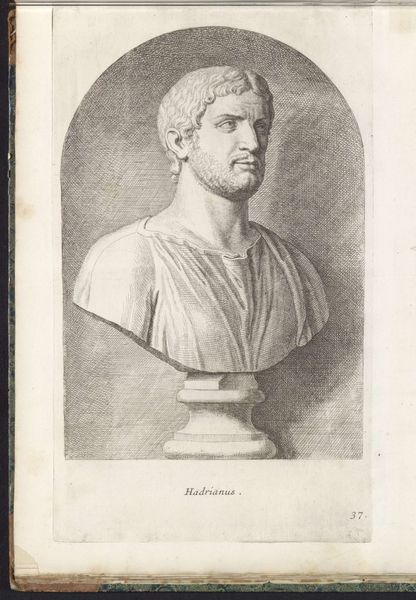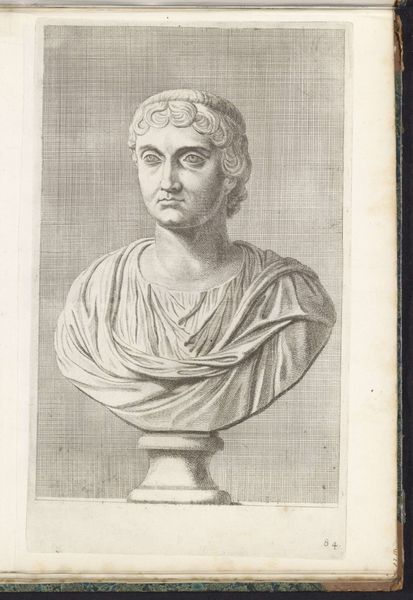
engraving
#
portrait
#
baroque
#
figuration
#
classicism
#
history-painting
#
engraving
Dimensions: height 325 mm, width 195 mm
Copyright: Rijks Museum: Open Domain
Curator: Here we have Hubert Quellinus' engraving, "Bust of Agrippina the Elder," created sometime between 1646 and 1670. What strikes you initially? Editor: The sternness in her gaze is arresting. There's a sense of resolute determination conveyed through the subtle lines around her mouth. And the way her garment drapes...it’s simple but elegant. Curator: Indeed. Agrippina lived a complex life, navigating treacherous political waters as a member of the Julio-Claudian dynasty. Considering Quellinus was working over fifteen hundred years later, it's compelling to consider the stories that have been written about Agrippina. What elements in this portraiture seem designed to speak to us even today? Editor: The drapery immediately conjures the classical world, yet is rendered in the baroque style then emerging – soft shadows playing over folds of the toga. That almost becomes an allegory of Rome’s enduring power and legacy through shifting cultural moments. It is all about visual legacy. Curator: Precisely! One can read her expression, for example, through a feminist lens. As the mother of Emperor Caligula, her ambition and influence in a male-dominated world should not be denied. And given Roman attitudes about gender, she may be viewed critically and sympathetically. Editor: Definitely, and that is emphasized in the symbolism of the bare breast. It hearkens back to depictions of the maternal goddess Roma herself, evoking power derived from procreation, destiny and, ultimately, from Agrippina's line. Curator: She really existed within layers of socio-political conflict, then, so is that visible through a modern appreciation of an older image? Do you see tensions mirrored in the portrait itself? Editor: Yes, that tension gives the work its lasting power. The face is certainly Agrippina but it evokes Roman ideals, and the image reflects Baroque ideals, which add nuance to its interpretation and emotional impact. The piece is more than just a rendering of Agrippina, then: it shows a Roman legacy, gender roles, a historical style and more. Curator: Ultimately, the piece offers us more than just the story of Agrippina the Elder: it's about how historical images, memory, and politics blend, allowing us a way to understand Agrippina on new terms. Editor: A visual puzzle then, inviting the viewer to decode the past through symbols.
Comments
No comments
Be the first to comment and join the conversation on the ultimate creative platform.
